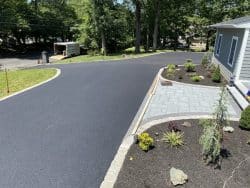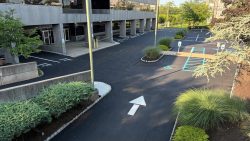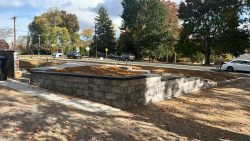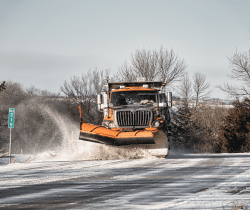Signs Your Commercial Parking Lot Needs New Pavement
A well-maintained parking lot is one of the first things customers notice when they visit a business. Cracks, potholes, and faded lines can make your property look neglected. Beyond appearances, a damaged parking lot poses safety risks for drivers and pedestrians and may even lead to costly liability issues. Pavement naturally wears down over time due to weather, traffic, and general use. Regular maintenance can extend its lifespan, but eventually, a full replacement is necessary. For over 25 years, business owners and homeowners have trusted Tomasso Contracting, Inc. with their paving projects. If you’re unsure whether your commercial parking lot needs repaving, here are the key signs to watch for.
Extensive Cracking and Alligator Cracks
Cracks are one of the first signs that your pavement is deteriorating. Small cracks may not seem like a big issue at first, but they can quickly expand and allow water to seep in. Once moisture reaches the foundation, the pavement weakens, leading to further cracking and structural damage.
One of the most serious types of cracking is alligator cracking—a pattern of interconnected cracks resembling reptile skin. This happens when the pavement’s base layer becomes compromised. At this stage, simple patching won’t fix the issue, and repaving is often the best solution.
Potholes and Deep Depressions
Potholes form when water gets into cracks, freezes, and expands, causing the pavement to break apart. When the ice melts, the weakened pavement collapses under the weight of vehicles, creating a pothole.
If your parking lot has multiple potholes, it’s a clear sign that the surface is deteriorating. Even if you regularly patch them, potholes tend to return if the underlying pavement is unstable. Deep depressions that collect water are also a problem, as they indicate sinking pavement that needs full replacement.
Standing Water and Drainage Issues
Pavement should be designed to allow proper water drainage. If you notice puddles forming in multiple areas after it rains, your parking lot may have grading or drainage issues.
Standing water can erode asphalt, leading to cracks, potholes, and even foundation damage. It also accelerates wear and tear, making it necessary to repave sooner than expected. Poor drainage can be caused by an uneven surface, blocked drains, or structural damage in the pavement layers.
Fading and Worn-Out Striping
Clear, bright parking lot striping is essential for directing traffic and keeping spaces organized. Over time, exposure to sunlight, rain, and traffic causes striping to fade. When parking lines and handicap markings are no longer visible, customers may struggle to navigate the lot safely.
Faded striping can also put businesses at risk of non-compliance with ADA (Americans with Disabilities Act) regulations, which require properly marked accessible spaces. If repainting is needed frequently, the underlying pavement may be too worn out to hold the paint effectively. In such cases, resurfacing or repaving may be the best option.
Surface Warping and Uneven Areas
A smooth parking lot provides a comfortable driving and walking experience. If you notice bumps, dips, or uneven surfaces, it could indicate structural problems beneath the pavement.
Warping is usually caused by heavy vehicle traffic, poor initial installation, or shifting soil beneath the pavement. This issue is more than just an inconvenience—it can lead to tripping hazards and vehicle damage.
If your parking lot has multiple uneven sections or noticeable waves in the pavement, repaving may be necessary to restore a safe, level surface.
Raveling and Loose Gravel
Raveling occurs when the top layer of asphalt starts breaking apart, creating a rough texture and exposing the underlying aggregate. Over time, small pieces of gravel become loose, reducing traction and making the lot less stable.
When raveling starts, it’s often a sign that the pavement is nearing the end of its lifespan. Sealing may temporarily slow the damage, but if the surface is too worn down, repaving is the only effective solution.
Frequent Repairs That No Longer Last
Regular maintenance is an integral part of parking lot care, but if you’re constantly fixing the same problems, it may be time to consider repaving.
Patching cracks and potholes is cost-effective in the short term, but if repairs don’t last or new damage appears frequently, the pavement may be too worn out to support fixes. In many cases, replacing the entire surface is more economical in the long run than constantly patching problem areas.
Final Thoughts: When to Call a Professional
If your commercial parking lot is showing multiple signs of deterioration, consider repaving. While routine maintenance can extend its lifespan, certain damage, such as deep cracks, potholes, and uneven surfaces, often requires a full replacement.
If you’ve noticed any of these warning signs, don’t wait until the damage worsens. Tomasso Contracting, Inc. can assess the condition of your lot and recommend the next steps. Schedule an inspection with us and start planning for a smoother, safer parking lot today.





